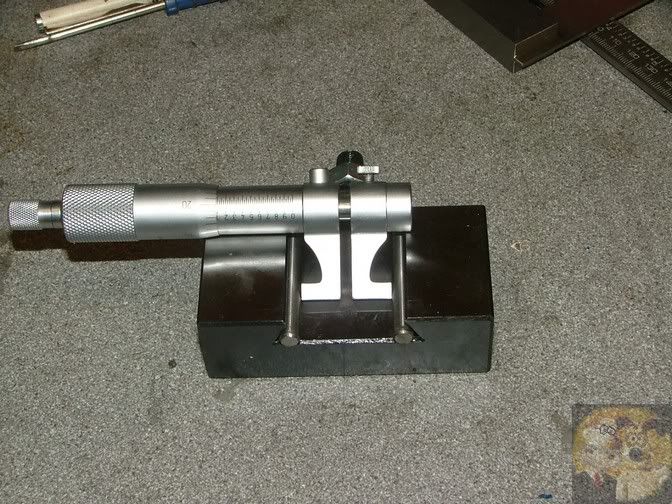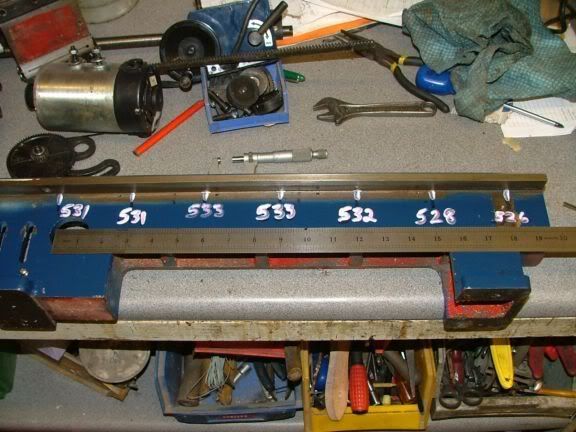If the screws don't have locking nuts fit locking nuts
Nick, yes they have locking nuts, well 3 of the 4 have, the fourth is also shorter, A friend with the same lathe has confirmed his is the same, otherwise it fouls the apron, not a great design is it!
I'm at a loss too about the use of a feeler gauge.
Hey Norm, after reading way too much, I found this, it sort of made sense, it proved to be a reasonably reliable starting point, after another two hours of saddle on, saddle off and fine tuning, it feels a lot better than it was , virtually no play, until I slide the saddle to the ends of the bed, it gets tight, but I'm thinking those areas are out of the usual working area
taken from
http://www.mini-lathe.com/Mini_lathe/Tuning/tuning.htm#Saddle
Here's a procedure suggested by Bruce Griffing:
I began by removing the saddle.* I also removed the apron, though that is not necessary.*** On each side, there are 3 socket head cap screws and two adjusting screws.*** In this procedure, you remove the two end SHCS's and don't use them until the end.** You begin by alternately loosening the center cap screw, adjusting the two adjusters and tightening the center screw until you achieve a 30 mil gap at both ends of the cast iron strip.** In this case the gap is measured between the iron strips and the saddle.* I used a feeler gage to measure the gap.* This should be done for both sides of the saddle.*
The next step is to loosen the center SHCS and put the saddle back on the lathe.*** Tighten the center SHCS and measure the gap between the ends of the strap and the underside of the ways. ** This should be done at both ends and on both sides.** If the gap is zero, go back to the beginning and increase the initial gap to 40 mils.** But it should be greater than zero, so record all 4 values.** Remove the saddle again and do some math.** If the gap with the ways was 12 mils then you want to reduce the* saddle gap from the initial 30 mils to 19.* This will reduce the gap with the ways to 1 mil - the target.**
This should be done for both ends of the strip - so it is a balancing act between the two adjusting screws.** Once the correct gap is set at both ends of both sides, install all of the SHCS's but leave them loose.* Reinstall the saddle and tighten the center SHCS on both sides. ** If the 1 mil gap is correctly set, the carriage will move freely at this point.*** Then the end SHCS's are adjusted to achieve the desired trade between rigidity and friction.** At this point, you are bending the strips to close the one mil gap at each end.*
This method works very well and is much easier than it sounds.** It minimizes stress on the strips and achieves good balanced retaining force.* It may be old news, but I haven't seen it yet. * One minor point - to do this you need some narrow feeler gages.* I actually used shim stock to measure the strip to way gap.*
John, the plates under the saddle that control the adjustment appear to be straight, I tried them on a piece of glass, they do however show some signs of wear. Given we try to have some degree of precision, this seems a real imprecise way of setting up the machine, relying on 4 crappy little screws with locknuts, and 6 socket head screws to finish it off.
I have followed the above recommendation, then had to spend a while fine tuning, problem is start to tighten up the 4 outside socket head screws, it all goes tight, loosen off the adjusting screws, play is introduced:wall:
Ive got it close, not perfect, but I suppose with a cheap machine I cant expect perfection
Paul






